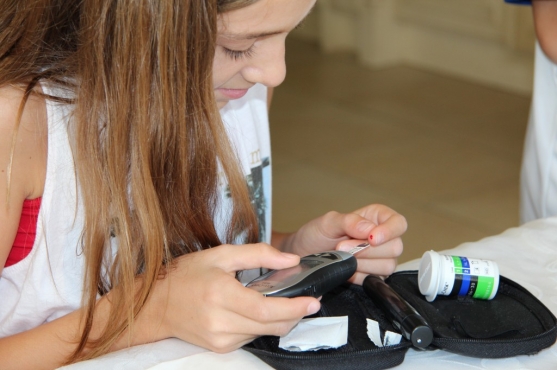
What is T1D?
Type 1 Diabetes is an autoimmune condition where the body’s immune system attacks the cells in the pancreas that produce insulin. Without the pancreas being able to produce insulin, sugar remains in the blood, which can cause severe damage to the body. For all those living with type one diabetes, no insulin is produced by the pancreas, thus requiring insulin injections in order to survive. Even though insulin is available through pumps, insulin pens and other devices, it is very difficult for all those living with this disease to maintain constant blood sugar levels. Diabetes is a major cause of death worldwide and is becoming an important public health challenge on a global scale. The number of people being diagnosed with the disease continues to rise.
Type 1 diabetes accounts for 5-10% of all cases. There are approximately three hundred thousand people in Canada, including both children and adults, living with this disease. Unlike type 2 diabetes that can be managed with exercise, diet and medication, those suffering from type 1 diabetes need to inject insulin daily in order to remain alive. As of today, unlike type 2 diabetes, there is no known cause for type 1 diabetes nor is it preventable. Unlike popular belief, it is not caused by eating too many sweets or by being overweight. Studies suggest that it results from genetic predisposition combined with environmental triggers. Presently, there is no cure for type one diabetes. However, the technology is continuously evolving, making the management of the disease easier. But a cure is not here yet. However, with your help, we are determined that this cure is soon to come.

Current therapy for Type 1 diabetes is insulin injections, which were created in 1929 by Canadian researchers Dr. Frederick Banting and Dr. Charles Best. Prior to 1929, those diagnosed with Type 1 Diabetes were faced with the sad reality of an untimely death. The current therapy is insulin as it helps the body convert glucose (sugar) to energy. Insulin is taken multiple times throughout the day. The amount of insulin required depends on many factors, including age, the number of carbohydrates one consumes, physical activity, stress, puberty and much more. In addition, one’s sugar levels need to constantly be monitored several times throughout the day. The delivery of insulin could be given either via injections or a pump. Liana used to give herself several insulin injections on a daily basis but is now on the insulin pump, which self-injects insulin according to presets that she has input herself. The technology is great, but it is nonetheless extremely difficult to keep one’s sugar levels under control with today’s therapy. It is a constant balancing act between all of the above-mentioned factors, which make handling the disease a daily challenging task. The available tools have greatly helped manage diabetes, but they do not eradicate the disease. A cure is still yet to come. There is a large focus on research aimed at improving the disease with better technology, but continued research is necessary for the discovery of a cure. That is why at LDF, we are working closely with researchers whose sole aim is to find a cure.
If Type 1 diabetes is left untreated, patients can suffer from a variety of life-threatening complications including blindness, strokes, amputations, kidney and heart failure. In addition, type 1 diabetics have a life span that is shortened by ten to fifteen years due to these long-term complications. With this disease, there is the constant worry that one’s sugar levels may drop too low and consequently result in a coma and eventual death. That is why doctors and researchers are working extremely hard towards improving technology and finding a cure! With your help, we know a cure is soon to come!